
Warframe is big. Both in its success and in its scale, a vast action game that is as much about space combat, apartment decorating, pet training, fishing, hover surfing, mech fighting and open world exploration, as it is the central ninja combat that defined its debut. It's now ten years old, a feat few of its service game and MMO peers can boast. Like its Tenno, Warframe is an underdog that prevailed against the odds.
Digital Extremes itself is almost 30 years old and spent the 2000s doing work-for-hire, creating licensed games for a variety of clients. The Darkness, Star Trek, Dungeons & Dragons... the studio survived by taking whatever work it could. But there was always one dream project, a little sci-fi game the team hoped to one day get off the ground. I asked where the idea came from. "Like every game dev in [2004] they played Resident Evil 4 and they wanted to make their own version of it," says Steve Sinclair, former creative director on Warframe, before he and fellow director Geoff Crookes both burst into laughter. Every answer they give is with a smile and you get the sense they're two guys who never take themselves too seriously. But there is some truth to their joke.
"Everyone rediscovered third-person," Sinclair explains, pointing to Resident Evil 4's success and games like Gears of War, following the era of first-person dominance, making their project seem more viable. "[Warframe] has its roots in what we call the sci-fi version of Dark Sector."
It was this version they pitched to numerous publishers in what is now dubbed the rejection tour'. "I was on the road pitching for a year, all over the world with a little cube PC that would always get scrubbed by the bomb squads." Despite the effort, publishers weren't interested. "Sci-fi was dead," they were told. "So like a really confident artist... I completely compromised our vision for it [laughs]."
This story is from the {{IssueName}} edition of {{MagazineName}}.
Start your 7-day Magzter GOLD free trial to access thousands of curated premium stories, and 9,000+ magazines and newspapers.
Already a subscriber ? Sign In
This story is from the {{IssueName}} edition of {{MagazineName}}.
Start your 7-day Magzter GOLD free trial to access thousands of curated premium stories, and 9,000+ magazines and newspapers.
Already a subscriber? Sign In

"The War Within itself has kept me coming back most evenings too"
WORLD OF WARCRAFT remains my jailer, and I couldn't be more pleased about it
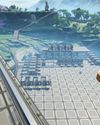
OK BUILDER
SATISFACTORY is the new titan in building and crafting games

HELL YES
DIABLO IV: VESSEL OF HATRED is a transformative expansion
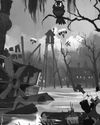
MOUSE: PI FOR HIRE
This mouse wants to be more than just a gimmick

WINDBLOWN
Dead Cells dev's new roguelike has me afraid for my free time
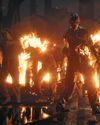
NO MORE ROOM IN HELL 2
As the zombie horde surrounded me just moments after taking down my two remaining teammates, the writing was really on the wall. Armed with just a chef's knife, it was clear I stood no chance, but I was going down swinging, hoping for a miracle... it didn't come.

OWNED BY STEAM
VALVE cordially reminds you that your games aren't yours

CURSE OF THE AZURE BONDS
These classic games haven't aged badly, but I sure have.
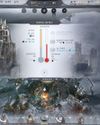
DEEP FREEZE
Endure a blizzard of tough choices and rough consequences in FROSTPUNK 2
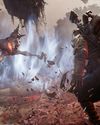
NEW HORIZONS
Building up REMNANT 2 outside the live service game grinder